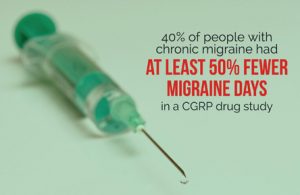Online, it’s easy to find people sharing what it’s like to life with migraine and the impact it has on their lives. Take a look at medical literature and patients’ experiences are scarce. In part, that’s by design—medical research largely looks at the pathophysiology and treatment options for an illness rather than focusing on patients’ experiences—but it’s also incomplete. How can health care providers know how to best treat people with migraine if they don’t understand the experience of living with the condition?
There are excellent studies based on surveys of patients responding to questions about life with migraine. That’s how we know the level of disability people experience during migraine attacks, the impact of migraine on the family, and the degree of stigma patients experience, for example. They provide insight, but not in the patients’ own words.
Which is why I was thrilled to find Learning the Full Impact of Migraine Through Patients Voices: A Qualitative Study, published in the July/August 2021 issue of the journal Headache. It shares the experience of living with migraine as told through the stories of people with migraine.
This is significant research because it moves patients stories out of the realm of anecdote and turns them into data with a fairly large number of participants. The idea of stories becoming data may seem off-putting, but it’s incredibly useful for painting a broader picture of life with migraine. Health care providers are trained in science. While the best providers take anecdotes into account when treating patients, they still rely heavily on data. This study provides data in patients’ own words.
The themes that emerged resonate deeply with my experience of migraine and the experiences of others that I’ve heard over 16 years of advocacy work. The six themes and their subthemes are:
Overall negative impact on life:
- Migraine controls life
- Migraine makes life more difficult
- Migraine attacks are disabling
- Lack of control over migraine attacks
- Pushing through migraine attacks
Migraine’s impact on emotional health:
- Isolation
- Anxiety
- Frustration/anger
- Guilt
- Mood changes/irritability
- Depression/hopelessness
Migraine’s impact on cognitive function:
- Trouble concentrating
- Difficulty communicating
Migraine’s impact on specific parts of life:
- Work/career (which results in guilt, change of job status, presenteeism, financial impact, school impact)
- Family life (which results in frustration, guilt, disrupted time)
- Social life (which results in irritability, altered plans, communication issues)
Fear and avoidance:
- Assuming the worst scenario for attacks
- Fearing future attacks
- Avoiding things to try to avoid a migraine attack
Stigma:
- Externalized
- Internalized
Patients stories were gathered as part of research on mindfulness-based stress reduction for migraine. The original intent wasn’t to tell the stories of patients, but to capture patients’ experiences during the research. So they weren’t asked generally about how migraine impacted their emotional wellbeing, but were asked if the intervention being tested in the research impacted their emotional wellbeing. That’s not a flaw, but an exciting opportunity for future research. From years of listening to people with migraine tell their stories, I expect that direct questions would show migraine’s impact on quality of life is even greater than these researchers found.
What do you think? Do these themes resonate with you? Are there other themes you think should be included?
Photo by Mikel Parera on Unsplash



 Amgen’s CGRP drug provided significant relief to participants with chronic migraine, according to new study results presented at an international conference in mid-September. The drug, called erenumab, was tested at two doses, 70 mg and 140 mg. “Both doses of erenumab were associated with significant improvements in health-related quality of life, headache impact, disability, and level of pain interference, compared to placebo,” according to
Amgen’s CGRP drug provided significant relief to participants with chronic migraine, according to new study results presented at an international conference in mid-September. The drug, called erenumab, was tested at two doses, 70 mg and 140 mg. “Both doses of erenumab were associated with significant improvements in health-related quality of life, headache impact, disability, and level of pain interference, compared to placebo,” according to